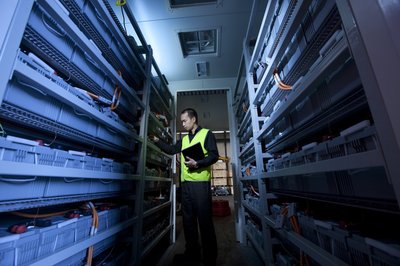Managing solar for remote communities
Tuesday, 16 October, 2012
Some Australian electric utilities operate a substantial number of diesel-fuelled power stations for remote communities that are too distant to connect to the main electricity grids. These communities can include hundreds of residents, along with local commercial activities and civil infrastructure to support the region. The wet season can make it difficult to access some communities by road for up to 1-2 months. Photovoltaic (PV) power generation has been identified as the most consistent source of renewable power to cover the daily power consumption profile of these communities.
Incorporating a high level of PV power generation into a diesel power station can cause quality-of-supply concerns when the solar power level changes abruptly, such as from passing cloud on a sunny day, as diesel engines require at least a few minutes to adjust to significant power changes on the local grid. There can also be short periods when the level of generated solar power gets close to or exceeds the local community consumption level, or where a power distribution feeder fault occurs, which requires the power output of the solar generating plant to be under direct and immediate control of the power station. Both of these concerns could, if not managed properly, lead to unacceptable levels of electricity voltage and frequency changes or possibly even power station outages due to protection devices tripping.
The Grid Stability System (GSS) from MPower can be used to manage a solar generating plant. The system is designed to minimise power fluctuations from solar generating plants into remote area diesel power stations by incorporating battery storage and control of battery energy to stabilise power production from PV power plants. The same concept could be applied to controlling and compensating for wind farm power variability.

“The system allows larger concentrations of PV to be incorporated as well as lowering the unnecessary cycling of plant due to dips in PV output resulting from intermittent cloud cover. This development enhances remote areas communities through power consistency, and availability, while also enhancing the cost-effectiveness of their power suppliers,’’ MPower Projects Managing Director Anthony Csillag said. “It’s a win-win situation.’’
Techniques and control systems used for the oil and gas industry, along with specialised battery management for remote area applications, make the GSS a convenient and suitable product for these remote area solar power systems.
The containerised product is the hub of the solar power plant, combining the control and electrical distribution to the photovoltaic modules and solar power inverters as well as the electrical and fibre-optic point of connection to the diesel power station. Automated processes, and remote communications to MPower’s service group, allow the product to operate with minimal local maintenance.
“While the Grid Stability System offers many advantages for remote area power and solar, its full benefits are yet to realised and we believe it will have a significant impact on the power industry in the long term,’’ Csillag said.
This impact may soon be seen, as MPower is already working with energy providers to use the GSS as support for the single wire earth return (SWER) networks that form much of rural Australia’s ailing power transmission and distribution system.
“Single wire earth return (SWER) distribution systems have been the traditional means of supplying power to remote areas, with dispersed customers over long distances,’’ Csillag explained. “It’s estimated that over 190,000 km of SWER networks have been built in Australia in the last 50 years and, due to steady growth in electricity demand and urban encroachment, much of the network is now reaching or exceeding its capacity.
“Upgrading or replacement of the network represents a significant capital cost. It has been estimated, for example, that to replace Victoria’s bare wire rural network alone would cost in the range $12-20 billion, with SWER line upgrades often exceeding $25,000 per customer.’’
Partnership brings innovative fuel solutions to Gippsland
A study by European Energy Australia and Opal at the latter's Maryvale Paper Mill will assess...
Data centres — a missed opportunity for sustainability
The question is no longer whether we need data centres, but how we plan, locate and govern...
Sodium-ion battery may provide greener energy
Scientists say sodium-ion batteries may be the answer to the future of sustainable energy storage...







